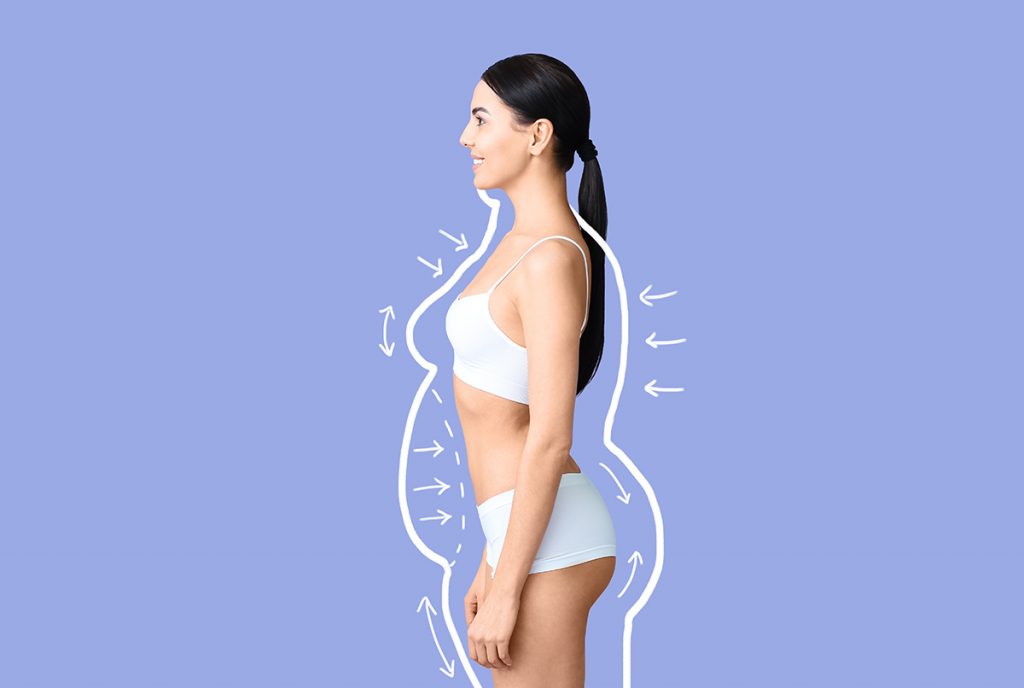Weight Loss Services

Weight Loss Nutrition Meal Plans and Services
Weight loss is the goal of a large part of the population, with about 40% of adults being overweight and 15% being obese.

These numbers show the magnitude of the problem, which unfortunately affects not only adults, but also children and adolescents. Over the past 40 years, the prevalence of overweight and obesity among children and adolescents aged 5-19 has risen by 14%. Even children aged 0-5 have increased body weight, with approximately 39 million children in this age group being overweight or obese in 2020 worldwide. For many years, our country had the lowest ranking in childhood obesity, with 1/3 of these children developing the particularly dangerous central obesity.
Causes
Overweight and obesity are complex health issues resulting from a combination of causes, such as behavior and genetics. While genetic factors cannot be changed, the behaviors leading to these health issues can be modified, including physical activity, dietary patterns, medication use, stress and sleep deprivation. Additional contributing factors include lack of education, as well as the impact of food marketing.
What are the consequences?
The distinction between an overweight and an obese person is made using a simple mathematical formula [(the weight in kilograms divided by the square of the height in meters (kg/m2)]. The result of this is the Body Mass Index (BMI). Overweight is defined as a BMI greater than or equal to 25 and obesity isdefined as a BMI greater than or equal to 30.
The higher it is, the higher the risk for certain health problems, as abnormal or excessive accumulation of fat in the body is a significant risk factor for metabolic disorders, diabetes mellitus, hypertension and cardiovascular diseases, respiratory problems, musculoskeletal disorders and cancer. Its impacts are also serious when it comes to appearance or mental health, as well as on the patient’s personal, social, professional and financial life – because obesity is a disease.
It is thus fair that people suffering from this disease want to return to their normal weight, to both avoid its complications on health and improve their quality of life. Body image dissatisfaction and itsimplications on social life comprises a strong motivation for younger people and the desire for good health for the older ones.


Weight Loss Methods
Given that obesity is not only related to body weight, but also to excessive fat accumulation, reducing fat mass is the best way to manage it.
Dietary changes are the first step in achieving this goal. During the last decades that we have seen a dramatic expansion of the disease, various strategies have been developed for getting rid of excess weight. Although regimens promising quick weight loss seem very attractive, gradual weight loss leads to substantial improvements in both body composition and anthropometric measurements.
Despite the fact that many of these methods are actually effective, the majority fails in providing long-term maintenance of the weight lost. This is mainly because people on diet believe that this periodwill be a short-term“deviation” from their routine and not a permanent way of living.This belief is wrong, because as soon as they give in to the temptations that led them to obesity, it reappears.
Deprivation diets that increase hunger and reduce satiety slow down the metabolic rate and influence the circulating levels of hormones. Although weight loss may be achieved, it is impossible to stick to such a diet forever, which means that weight loss cannot be maintained.
Therefore, being able to stick to a diet throughout your life withoutcausing a burden and without negative psychological impacts is what actually makes a diet successful.
Flexible Dieting
Most diets impose strict rules and restrictions on eating habits based on an “all or nothing” approach. Such diets eliminate or restrict the consumption of certain foods or food categories, a strategy that ultimately has a negative impact on weight. Those who stick to such diets separate foods in forbidden and permitted,adhering to excessive dietary rules and limiting the variety of foods they eat, which may eventually lead to obsessions or compulsions.
Flexible dieting has taken off over and has won enthusiastic support the past years; it is characterized by a more moderate approach to eating behaviors. Its positive impact on weight losshas been demonstrated, partly because of the absence of overeating that usually comes after a period of strict and restrictive dieting. Moreover, itdecreases the desire to eat and allows adjustments of the daily food consumption, without any compensatory behaviorsthat adversely affect long-term weight maintenance.
Flexible nutrition is based on the philosophy that macronutrients (carbohydrates, fats, proteins) are important. It allows eating any food, even junk food, without this implying that it ignores micronutrients (vitamins, minerals and trace elements). In particular, the idea is to eat healthy foods 80% of the time, which provide your body with the necessary nutrients to be healthy and lose weight. The rest 20% of the time it includes foods that are excluded by other weight loss regimens, such as sweets, burgersorhotdogs.With this ratio, it is possible to achieve satiety and taste satisfaction without adding many empty calories and without compromising health. It further allows us to keep up with our social life that is often lost with rigid diets.
Also known as “If It Fits Your Macros” (IIFYM), this particular weight loss method provides nutritional freedom, without tracking calorie intake while taking into account individual preferences. It includes the right proportion of foods that arebeneficial to health and satisfysensory needs, thus contributing to proper body functioning and fat loss while satisfying the need for enjoyment. It has further proved its value as a nutritional recommendation that offers more chances of success in losing weight and maintaining it in the long run.
Learning how to choose foods that allow the intake of the individually required amounts of macronutrients helps us create a more attractive and unrestrained diet plan, taking into account the lifestyle and anyunexpected events that may occur.


Nutritional Education
Overweight management requires the active participation of the individual who wants to get rid of excess weight and have a well-shaped body while enhancing physical condition. Nutritional Education of the individual is thus essential, as it will offer the basic knowledge about the scientific basis of flexible nutrition. This knowledge will allow informed decision making when choosing foods and cooking methods, but also for eating out.
Dimitris Oikonomakis and the qualified dieticians of Myflex team offer continuing and effective nutrition education,transferring their knowledge and how to use it in practice. In addition, they explain why energy balance is important in an easy to understand and practical way, to boost weight loss, with the assistance of experienced trainers.
Flexible dieting and nutrition is effective, with no distinctions between foods, without commitments and restrictions, allowing for a healthier relationship with food and a normal lifestyle.
Yes, you can. The proper nutrition for your body will lead to weight loss. However, exercise is important because it brings the desired results faster and it tones up the body.
No, you don’t have to. The MyFlex dietitians – nutritionists calculate and write down the food portions that you should consume every day on your personalized meal plans. If you are interested, our experts can teach you about calories and macros.
Protein: eggs, fish, tofu, beans, meat, dairy products, nuts, etc.
Carbohydrates: legume, pasta, potato, bread, whole wheat products, nuts, etc.
Fats: fatty fish (e.g. salmon, tuna, mackerel), olives, olive oil, avocado, peanut butter, nuts, etc.
Yes, it is totally safe for everybody to try this diet plan because MyFlex accommodates every single person’s food preferences, habits, needs and goals.